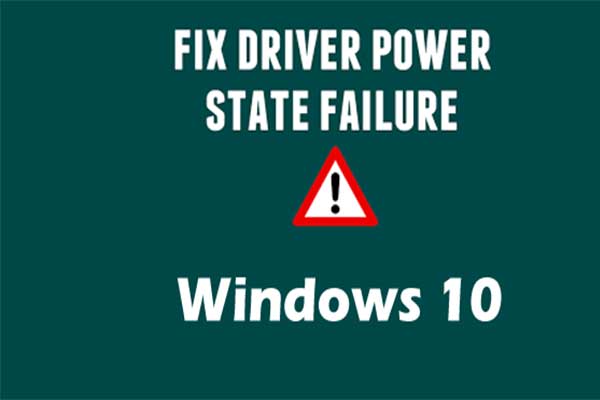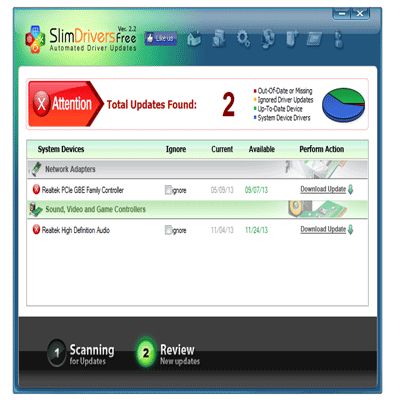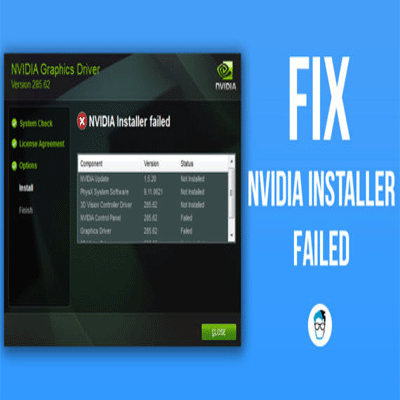Errors with the user interface are usually not just in Windows 10 but in all previous Windows operating systems. This time, we’re going to talk about solving the issue with the taskbar in Windows 10, and I hope this article will be helpful to you if you are in trouble because of the Windows taskbar not responding issue.
Following are the ways to resolve the Windows taskbar not responding problem:
Fixation of Windows Taskbar not responding on Windows 10:
- Non-clickable Taskbar Windows 10: Many users complained that their Windows Taskbar doesn’t work. This can be a huge issue since you won’t be able to utilize your Windows Taskbar at all.
- Windows 10 Taskbar frozen: Sometimes your Taskbar might stop working. In fact, many users reported that their Windows 10 Taskbar is completely frozen.
- Right-click Taskbar not responding: Many people have reported that right-clicking on their Windows Taskbar is not working. However, you should be able to fix this trouble by using one of our solutions.
- Taskbar thumbnails not working: According to users, it seems that Windows Taskbar thumbnails aren’t working. If you have this issue, the Windows 10 Taskbar preview won’t work for you at all.
- Pin to Taskbar not working: Users tend to pin their favorite applications to the Taskbar in order to access them faster. However, many users reported that this feature isn’t working for them.
- Lock the Taskbar, autohide Taskbar not working: Another problem with Taskbar is the incapability to lock or automatically hide the Windows Taskbar. This is an unimportant problem, but you should be able to fix it using our solutions.
- Taskbar search not working in Windows 10: Users reported that the search feature isn’t working for them. This can be a big problem, in case if you use the search feature commonly to access applications.
- Taskbar not responding on startup: Several users reported that issues with Taskbar occur right on startup. This means that you won’t be capable to utilize your Taskbar at all on Windows 10.
- Jump list of Taskbar not working: Several users reported that Jump lists aren’t working on their PC. This can be a problem if you use Jump lists frequently to open recently used files.
- Cortana Taskbar not working: Some users complained, it seems that Cortana is not working on their Windows Taskbar. Cortana is an integral part of Windows 10, and not being able to use it can be a big issue.
- Windows Taskbar buttons not responding: Another relatively day-to-day problem with Taskbar. Few users reported that Taskbar buttons aren’t working, but you should be able to fix this problem using one of our solutions.
1. Restart Windows Explorer:
Before we get to some ‘system-messing’ solutions that include Command Prompt and PowerShell, let’s try one simple solution. A simple restart of Windows Explorer will restore the functionality of the taskbar, and other user interface features, so if your Windows 10 taskbar problem is not that serious, this solution should work just fine. Here’s exactly what you need to do:
- Press Ctrl + Shift + Esc and choose to open Task Manager.
- Under Processes, find Windows Explorer, right-click on it, and select End task.
- The task will re-launch itself after a couple of moments, so check if everything is okay with your Windows taskbar now, after you restart Windows Explorer.
2. Using PowerShell :
If restarting Windows Explorer didn’t get the job done, or it just temporarily solved the issue, you can try some more advanced solutions. This problem will require you to use Windows PowerShell, so if you don’t know how to work in this environment, you should ask someone better informed for help. Just follow these steps to perform the fixing of PowerShell:
- Right-click on the Start Menu button and choose Command Prompt (Admin) from Win + X menu.
- In the Command Prompt enter the following command and press Enter PowerShell.
- Now paste the following command in the Administrator: Windows PowerShell window and press Enter key:
- Get-AppXPackage -AllUsers | Foreach {Add-AppxPackage -DisableDevelopmentMode -Register “$($_.InstallLocation)AppXManifest.xml”}
- Now, close PowerShell, and go to the following
C:/Users/your_username/AppData/Local/.
- Locate and delete the TileDataLayer folder.
- Now check if your taskbar is not working, you don’t even have to restart your computer.
3. Re-installation of apps or Cortana and ShellExperienceHost :
If you don’t want to reinstall all of your applications, your best bet is to just re-register Cortana and ShellExperienceHost. And here’s exactly how to do that:
- Right-click the Start Menu, and choose Windows PowerShell (Admin). If you don’t have this option available, repeat steps 1 and 2 from the previous solution.
- Enter the following commands (each command resets one feature) into PowerShell, and press Enter:
Get-AppxPackageMicrosoft.Windows.ShellExperienceHost | for each {Add-AppxPackage -register “$($_.InstallLocation)appxmanifest.xml” -DisableDevelopmentMode}
- Now write the following Command.
Get-AppxPackageMicrosoft.Windows.Cortana | foreach {Add-AppxPackage -register “$($_.InstallLocation)appxmanifest.xml” -DisableDevelopmentMode}
- Wait for the procedure to end.
4. Check the Drivers:
Although it seems unlikely, there’s a chance a bad driver is creating the issue of the Windows taskbar not responding. It is known that incompatible drivers can make quite a mess in Windows 10, and a disorganized Windows taskbar is one of the possible problems. So, make sure all your drivers are up to date, and update any outdated drivers.
We also strongly suggest TweakBit’s Driver Updater (approved by Microsoft and Norton) automatically downloads all the old drivers on your system. This tool will keep your system secure as you can manually download and install the wrong driver version.
5. Update your PC
If you’re running an older version of Windows 10, there’s a chance some of the system parts might get corrupt, and most probably that would be the reason for the Windows taskbar not responding. That’s exactly why Microsoft suggests its users always have the modified version of Windows 10 installed on their computers. To check for updates manually, do the following:
- Press Windows Key + I to open the Settings app.
- Now go to Update & Security section.
- Now click on the Check for updates button.
Note: This especially applies if you’re in the Windows Insider program, because the Preview creates you’re testing are, most of the time, pieces of an upended puzzle that is the next major update for Windows 10. Builds tend to be quite troublesome, and issues with Windows portions, like the taskbar are the common sight.
6. Via System Restore:
Windows taskbar not responding happens sometimes when the system files on your PC got corrupted; sometimes the best way is to perform System Restore. This feature will bring your computer back to its old working state, without affecting your files and data. Therefore it’s a much safer option than performing the clean install.
To complete System Restore, follow these steps:
- Type Recovery in the Search bar and select Recovery from the list.
- Select Open System Restore.
- The System Restore window will now open. Click on Next to proceed.
- If available, check Show more restores points. Select the desired restore point, and click on
- Follow the instructions on the screen to finish the restoration procedure.
Remember that you’ll need a valid Restore Point in order to perform System Restore. If you don’t have any, there’s no point in performing System Restore at all. Of course, don’t make a Restore Point while your taskbar is not working, because you certainly don’t want to get back to that.
7. Using Troubleshooter:
Windows 10 Creators Update brought a useful feature called Troubleshooter. This feature will help you resolve many system-related issues in Windows 10. Using Troubleshooter is much easier than entering code in PowerShell or Command Prompt.
Now, we’re back to our possible issues with Windows apps, that might interfere with the taskbar. You can use Troubleshooter to deal with potential issues with Windows apps, and you’ll see that it’s easier than Solution 3.
Here’s exactly what you need to do:
- Go to the Settings option and go to Update & Security window.
- Select Troubleshoot from the menu on the left. In the right pane, select Windows Store Apps. Now click on Run the troubleshooter.
If there are any troubles with Windows applications, Troubleshooter will detect and solve them. However, if the taskbar is still unresponsive after performing troubleshooting; move on to the next solution.
9. Start Application Identity Service:
There are some reports that recommend starting the Application Identity service will solve the taskbar problem. So, we’re going to try just that. Here’s what you need to do:
- Go to Search, type services.msc, and open Services.
- Find the Application Identity service in the list.
- Right-click on it, and choose Start.
- (There’s no need to restart your computer).
10. Using DISM:
It is a phrase for the Deployment Image Servicing and Management. The main function of the DISM is to scan and resolve corrupted files on your system, including the Windows taskbar.
Here’s what you need to do to run DISM:
- Press Windows Key + X and start Command Prompt (Admin).
- In the command line type the following command:
DISM.exe /Online /Cleanup-image /Restorehealth
- Make sure to replace the” C: RepairSourceWindows” path of your DVD or USB.
- The operation should last no more than 5 minutes.
11. Through Clean Windows Installation:
If nothing worked out and you’re trapped in cycles trying to solve what’s the reason for the Windows taskbar to stay unresponsive, your final solution is the clean reinstall. Yes, it may seem like a time taking process when we have in mind that you’ll need to back up your data and setup again all those settings. However, this is your last resort and we recommend you take it into consideration.
By following the above methods I hope users would be able to resolve Windows 10 Taskbar Not Working or Windows taskbar not responding issue on their own and make their Windows 10 taskbar workable again.










